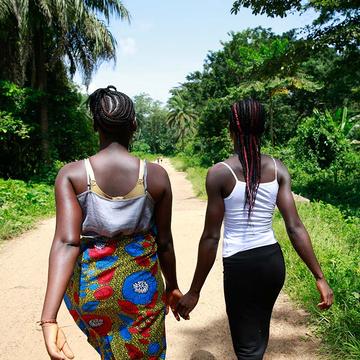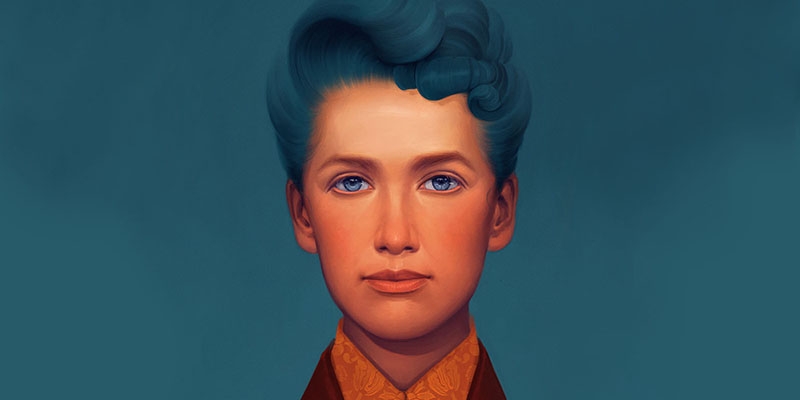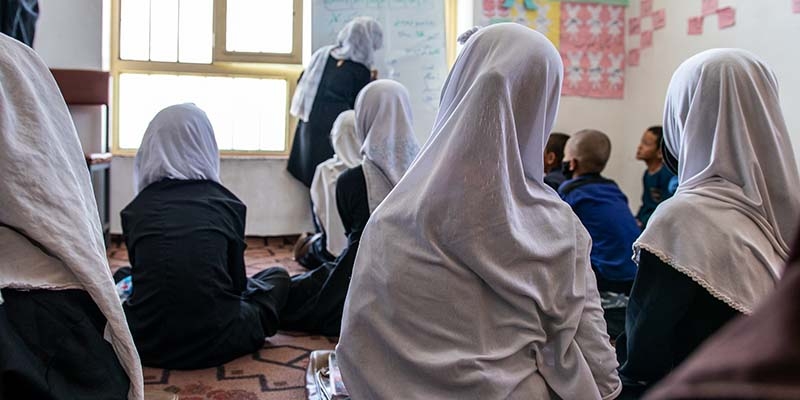Child Marriage: The Devastating End of Childhood
The devastation of child marriage effectively ends a girl’s childhood. How? Forced marriage robs a girl of her education and more, replacing lessons learned in the classroom with adult responsibilities, including forced pregnancy, well before she’s ready. This not only violates her rights, but risks her life, the lives of her children and the future of her community.
Tragically, about 40 million girls worldwide are currently married or in a union – and without our help, an estimated 150 million girls will be married in the next decade. This is unacceptable.
Read more about the issues, Save the Children’s impact – and how you can help end child marriage.
What is child marriage?

Asha, 19, found out that her family were making arrangements for her wedding when she was 15. The union had been agreed when she was 3 years old. She enlisted the Children’s Group and Child Protection Committee to lobby her father who eventually gave in and stopped the marriage. She has since helped other girls stop their marriages and has continued her education.
Child marriage is formal or informal union before age 18. It is a violation of children’s human rights that robs children of childhood. Child marriage also disrupts their education and drives vulnerability to violence, discrimination and abuse.
Yet these are some of today’s tragic child marriage statistics:
- About 40 million girls ages 15-19 are currently married or in a union worldwide.
- Each year, some 12 million more girls will marry before reaching age 18 – and of those, 4 million are under age 15.
- Save the Children’s Global Girlhood Report estimates that an additional 2.5 million girls are at risk of child marriage globally between 2020 and 2025, as a result of reported increases in all types of gender-based violence due to the COVID-19 pandemic.
- We project that up to 15 million girls and boys will never return to school following pandemic lockdowns and school closures. Children who don’t come back are at greater risk of early marriage, child labor and recruitment into armed forces.
- By 2030, it’s estimated that 150 million girls will lose their childhoods due to child marriage.
What are the effects of child marriage?

Rizwana inside the the temporary shelters that she calls home. Rizwana had several difficult years but was assisted through them by Save the Children to better educate her family and avoid attempts of child marriage and child labor and eventually continue with her education.
Early marriage has devastating consequences for a girl’s life. Effectively, child marriage ends her childhood. Girls are forced into adulthood before they are physically and mentally ready. Child brides are frequently deprived of their rights to health, education, safety and participation. What’s more, an arranged marriage often means a girl is forced to wed an, at times significantly, older man.
Girls married young are far less likely to stay in school, with lifelong economic impacts. They are often isolated, with their freedom curtailed. They are at higher risk of physical and sexual violence. Child brides are also at greater risk of experiencing dangerous complications in pregnancy and childbirth, contracting HIV/AIDS and suffering domestic violence.
What are the effects of forced pregnancy?

“At the age of thirteen I was forced to marry a man who was much older than me," says 15-year old Aisha, seen here with her two-year old daughter. "I lived with him for awhile but we couldn’t get along because he was so much older than me.
Every year, around 17 million girls give birth. Forced pregnancy and childbearing at a young age, often a result of child marraige, when a girl’s body is not physically mature enough to deliver without complications, can also lead to devastating consequences.
Complications during pregnancy and childbirth represent the number one killer of girls ages 15-19 worldwide. And babies born to adolescent mothers face a substantially higher risk of dying, with a higher likelihood of low birth weight, malnutrition and underdevelopment. Young mothers are far less likely to be in school, and therefore more likely to struggle economically.
Where around the world does child marriage happen?

Amina* was 15 when child marriage threatened to ruin her life. Her father lost his income during COVID-19 lockdown and the family struggled to survive. Amina’s father received a marriage proposal for her and he agreed as the money the family would receive would help solve their financial problems. However, Amina’s mother was furious and went to Save the Children for help. Together they persuaded Amina’s father to reject the marriage offer and to continue her education.
Child marriage is a global problem and is compounded by poverty. Child marriage is a problem that cuts across countries, cultures, religions and ethnicities. Child brides can be found in every region in the world. Major factors that place a girl at risk of marriage include poverty, especially in rural areas, as well as weak laws and enforcement, the perception that marriage will provide “protection,” customs or religious laws, and unequal gender norms.
In Africa, an estimated 12 million girls are still married each year. Despite worldwide progress in reducing child marriage and pregnancy, these are the countries with the highest child marriage rates: Niger, Central African Republic, Mali, Mozambique, and South Sudan.
Why do child marriage rates rise during conflict?

Kadidia*, 14, and her parents were determined that the violence sweeping Africa’s Sahel region – including her homeland Mali – wasn’t going to end her chances of completing her education.
Conflict increases the inequalities that make girls vulnerable to child marriage – and its consequences. Families may arrange marriages for girls, believing marriage will protect their daughters from violence by strangers or armed groups, as well as to ease financial burdens on the family.
For example, child marriage rates have risen in war-ravaged Yemen, one of the few countries in the world without a legal minimum age for marriage. Now more than two-thirds of Yemen’s girls are married before age 18, compared to half before the conflict escalated.
Child marriage is also a growing concern among refugee children, including those from Myanmar and the Central African Republic.
How is Save the Children is a world leader in ending child marriage?

Cousins Kpemeh* and Kuji*, are Save the Children campaigners in Sierra Leone advocating against child marriage, early pregnancy, and encourage girls to get back to school. *Names changed to protect identity.
Thanks to compassionate supporters like you, Save the Children has championed equal rights for every child for over 100 years. We helped reduce child marriage worldwide by nearly one-third since 1990 – that’s tens of millions more girls empowered to stay in school or transition to work, and make marriage and motherhood decisions for themselves.
Save the Children puts gender equality at the heart of all we do. Every day, right from the start, we work to empower girls to stay in school, delay marriage and acquire the life and livelihood skills needed to successfully transition to adulthood. We work with girls and boys, families, communities and countries to change harmful gender norms and laws. Plus we empower girls to speak up, lead and succeed. We are the leading advocate for U.S. investment in girls’ leadership around the world.
When you support Save the Children – whether it’s by donating, advocating or participating in an event challenge – you’re helping bridge the gap between the challenges girls face, like child marriage, and the futures they deserve. You’re helping ensure all children have equal opportunities to grow up healthy, educated and safe.
Together, we can change children’s lives – ultimately, transforming the future we all share.
**Sources: Unless otherwise noted, facts and statistics have been sourced from Save the Children’s program and monitoring and evaluation experts, as well as published reports.




